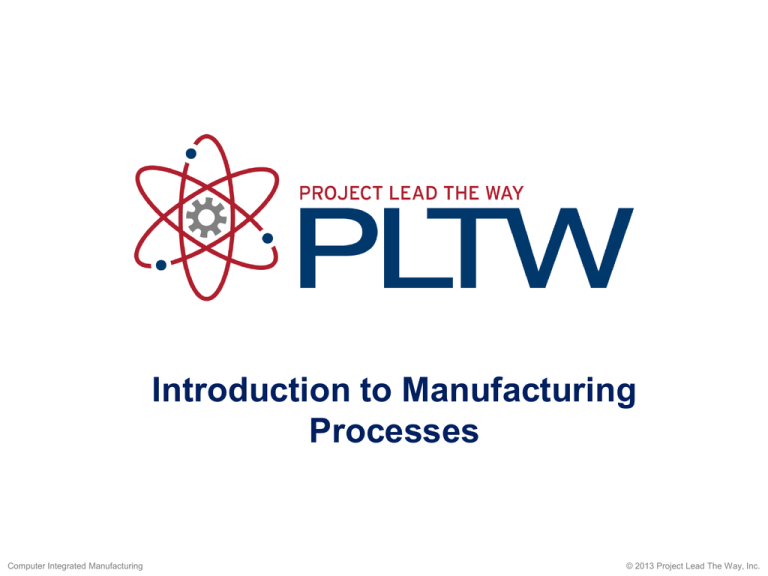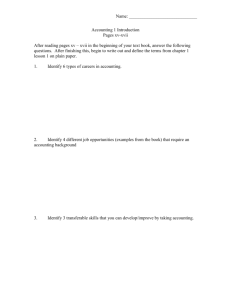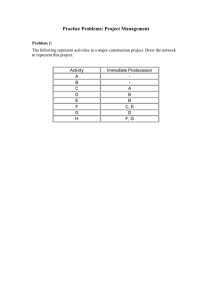2.2.2.A MfgProcesses
advertisement

Introduction to Manufacturing Processes Computer Integrated Manufacturing © 2013 Project Lead The Way, Inc. Types of Manufacturing Processes • Primary Processing – Raw materials to industrial materials – Raw materials are renewable or exhaustible • Secondary Processing – Create final products from primary product Manufacturing Process Example Mine Extracting Raw Materials Secondary Processing to Manufacture A Ladder Primary Processing to Manufacture Bar Stock Manufacturing Process Input Process Feedback Output Materials • Ceramics, metals, and plastics are wellsuited to manufacturing. • Their properties determine the process for which they are best suited. Materials Organic Materials Solid Engineering (Industrial) Materials Inorganic Materials Liquid Gas NonEngineering Materials Polymeric Metallic Ceramic Composite Video Selecting Materials Internal Structure Types of atoms Bonds between atoms Molecular structure Property Physical Mechanical Chemical Thermal Electrical – Magnetic Acoustical Optical Conditions Chemicals Radiation Mechanical Loads Thermal Electromagnetic Fields Sonic Forces Casting and Molding Casting and Molding Videos Separating • Involves the removal of material • Also referred to as the subtractive process • Includes two types of processes – Chip Forming – Non-Chip Forming Separating Videos Joining • Also referred to as the additive process • Materials added in layers to build a finished part • Examples – – – – Welding Gluing Soldering Prototyping Forming • Uses force to cause a material to permanently take a shape • Changes some of the material properties Forming Videos Finishing • May be completed before or after assembly • Used primarily to protect a product from various conditions • Also used to enhance a product’s appearance Finishing: Deburring • Methods include filing, scraping, and trimming • Considerations include actual requirements regarding work piece specifications, production quantities, and cost Finishing: Cleaning • Involves the process of removing unwanted material from work pieces • Techniques include – Alkaline cleaning – Electrolytic cleaning – Solvent cleaning – Vapor degreasing – Acid cleaning – Abrasive blasting – Abrasive wheels Finishing: Coating • Involves a material being applied to a work piece • May be mechanical, electrolytic, or conversion Finishing: Assembling • Involves putting parts together • May be temporary or permanent • Includes bonding and mechanical fastening Finishing: Conditioning • Refers to changing the physical or mechanical properties of a material • Includes thermal, chemical, and mechanical References Custompart.net. (2008). Tutorials. Retrieved from http://www.custompartnet.com/wu/InjectionMolding Microsoft, Inc. (2008). Clip art. Retrieved from http://office.microsoft.com/en-us/clipart/default.aspx Society of Manufacturing Engineers (Producer). (2010). Forging. Available from the Society of Manufacturing Engineers, One SME Drive: Dearborn, Michigan 48121. The ABB Group. (2008). Photo gallery. Retrieved from http://www.abb.com Wikipedia (2010). Assorted bar stock for metalworking. Retrieved from http://office.microsoft.com/enus/clipart/default.aspx References Wikipedia (2010). Weipa bauxite mine. Retrieved from http://office.microsoft.com/en-us/clipart/default.aspx




